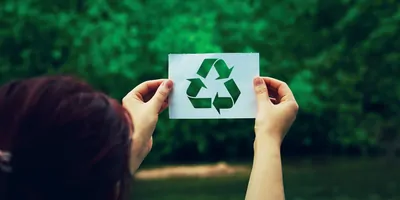Laboratories are resource-intensive spaces. Lab storage spaces are often filled with stacks of boxes containing gloves, pipette tips, or PCR plates—all used once, and then thrown away. So, what can be done to reduce the environmental impact of lab work? We’ve all heard, ‘‘reduce, reuse, recycle,” or “the Three R’s,” but how can this concept be best implemented in the lab? Here are some ways to rethink laboratory and experimental design through the lens of waste minimization.
Reduce
When it comes to reducing waste at the bench, most of the work begins before the experiment starts. Planning is critical to waste prevention. For instance, purchasing and using sustainably-made products can start an experiment with as much as a 75 percent decrease in upstream carbon emissions.
Another way to save on waste is to instruct researchers to create master mixes of solutions and thoughtfully dispense material to reduce the number of pipette tips needed. First, dispense the master mix using a repeat pipettor, then add individual samples.
“Purchasing and using sustainably-made products can start an experiment with as much as a 75 percent decrease in upstream carbon emissions.”
“If you have common reagents, pre-loading universal solutions saves 84 pipette tips per plate,” says Noah Pyles, chief operating officer at Polycarbin. To further save, don’t skip columns on assay plates. Use a marker to create lines to maximize space.
External emissions are something that a lab should look to reduce as well. “Waste isn’t always a solid material,” says Nick Ciancio, sustainability coordinator at the University of Alabama at Birmingham. “Researchers throughout UAB’s campus have been trained to put autoclaves into standby mode to save steam and electricity usage. Researchers also utilize standby ULT freezers for defrosting their own equipment, ensuring that their ULTs are maintained properly and save energy.”
Reuse
Reuse efforts also serve as a valuable strategy for reducing waste. One example of reuse in the lab is consolidating leftover reagents that come with assay kits for future use. “Combine them so that you don’t have to open new ones or waste unfinished ones,” suggests Pyles. This approach saves money and plastic. If you find yourself in a biosafety level 1 lab, reusing gloves by wiping them down with 70 percent ethanol will make them reusable throughout the day, adds Pyles.
Recycle
Remember to consider during the experiment whether everything needs to go into the biohazardous waste bin or single-stream incineration. Many materials that are assumed to be red bag waste are not, though be sure to check with your EHS officers about what in your lab can be taken out of those streams and recycled. Instructional posters mounted near the receptacles can help save time, waste, and money.
“As a community of researchers, we are equipped with the tools and techniques needed to reduce the carbon footprint of innovation.”
Today, many brands offer some sort of recycling solution, but not all are created equal. Seek out programs that are truly recycling, and not just downcycling. For example, Polycarbin turns single-use plastics back into labware, like tips and tubes.
Every action and experiment matters when measuring a lab’s carbon footprint. As a community of researchers, we are equipped with the tools and techniques needed to reduce the carbon footprint of innovation. Taking the time to consider the Three R’s and how these small changes can make a big difference is key to minimizing your lab’s environmental impact.











